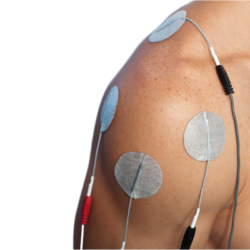Schizophrenia is one of the most important chapters in modern psychiatry , it has profoundly changed the way we think about mental disorders and given new impetus to the study of neuropsychiatry. Stemming from Kraepelin’s research on dementia precocious, it was notably influenced by Freud’s conception . The notion of schizophrenia gradually becomes more and more independent, under the influence of Bergson’s thought ; the concept of losing important connection with realitythus became the focal point of this psychopathology. In the field of psychological constitution, the conceptualization of schizophrenia considers the characteristic behavior of an individual in relation to his environment.
A little history
The term schizophrenia (from the Greek skhizein , which means split , and phren , which means spirit ) was submitted by Eugen Bleuler in 1911 shortly after Emil Kraepelin’s account . Prior to Bleuler’s description , patients with a schizophrenic profile had been diagnosed with dementia precocious as defined by Kraepelin . Faced with the observation that all patients do not inevitably progress towards deterioration, Bleuler therefore proposed to delete the term precocious dementia and replace it with the term schizophrenia..
The psychopathological classification from the end of the 19th century until the beginning of the 20th century made schizophrenia distinct from manic-depressive illness (current bipolar disorder ). These two alterations are distinguished by their own evolutions; gradually for schizophrenia and by recrudescence for manic-depressive psychosis .
From then until the beginning of the 19th century, alienation was specifically portrayed according to the paranoid content of the subject. The obsession, in which the focus has a single object or a handful of objects, was thus differentiated from monomania , in which delirium extends over all kinds of objects, and from melancholy (frenzy over an object or a myriad of objects inspiring a feeling of sorrow). The classification of delusions was also carried out according to their themes in order of magnitude, mysticism, persecution or possession, etc. However, these classifications have an intimate connection to the patient’s personal culture as well as to his or her history, and to the influence of the social context .
What is schizophrenia?
Schizophrenia is a neurosis characterized by a split of the personality , comprising ideoverbal inconsistencies accompanied by systematized delusions .
This idiopathic psychopathology appears in sequential flares and can fluctuate into a demented state . The sufferer then experiences an inordinate torment and anxiety gradually overwhelms those around him. It is currently estimated in France, 600,000 people affected by this neuropsychiatric disease, or 1% of the population.
Current research works tend to identify genes capable of inducing this condition. We can now affirm that this pathology is the result of a dysfunction of several neurotransmitters, in particular and especially dopamine , but also the serotonin which would be secreted in excess, as well as the glutamate in insufficient quantity. The secretory dysregulation of these neurotransmitters hinders access to the brain of information to be processed. Among the processes involved in these brain dysfunctions, alterations in the connections between neurons seem to be strongly involved.
Neurodevelopmental hypothesis:
According to some researchers, the appearance of schizophrenic pathogenesis is only the repercussion of an aggression experienced in utero , during the mother’s pregnancy (violence, trauma, abuse, rape, birth by cesarean section, difficult childbirth, etc.) . This aggression would be responsible for disturbances in the maturation of the central nervous system , the consequences of which could be the appearance during adolescence of a dysfunction of the central nervous system, responsible for the appearance of clinical signs of schizophrenia.
Is schizophrenia an inherited disease?
The current hypothesis is based on a multigene model (several genes will intervene and interact with each other, and each of them is not a necessary or sufficient condition to cause the disease) as well as on a multifactorial model (l the environment will also interact with genes to promote the onset of the disease). Schizophrenia will only develop when these gene-environment interactions exceed a certain threshold of sensitivity.
In some people with a very close degree of parenthood, such as twins for example, the risk of developing the disease is about 10 times higher than that of the general population (50% risk). In contrast, the rate of inheritance in twins is 5 times higher than parent-to-child transmission (only 10% risk). When the degree of kinship decreases, this risk decreases rapidly. The family prevalence of the disease therefore remains relatively low (around 10% of cases).
Can we cure schizophrenia?
In recent years, more and more patients with schizophrenia are recovering from the disease thanks to advances in science, in particular thanks to the use of neuroleptics. Indeed, contrary to the purely Kraepelinian vision of this pathology, a large number of favorable developments favor more positive conceptions of the functional prognosis, in particular supported by certain patient testimonies and longitudinal studies. It should be noted, however, that recovery does not mean reverting to the state prior to the disease. This notion of “recovery” involves alleviating the symptoms causing the suffering or illness of the individual .
Where are we in terms of clinical research on natural treatments?
The Eschscholtzia :
The californidine contained in eschscholtzia causes inhibition of prolyloligopeptidase, involved in schizophrenia, bipolar disorders, as well as other neuropsychiatric disorders.
The Ginkgo biloba :
A 2013 meta-analysis on ginkgo showed that in people with dementia, ginkgo improves the performance of daily tasks. It would have no effect on other types of dementia (autism, depression, anxiety, etc.) but it acts on dementias associated with neuropsychiatric disorders. Even so, a 2001 study showed that the herb improves symptoms of chronic schizophrenia when combined with haloperidol.
The CBD :
CBD also has positive effects on mood as well as sedative properties for improved sleep. It is furthermore endowed with an antipsychotic action potential which helps patients suffering from schizophrenia, bipolar disorder, depression or other mental disorders.
Medical bibliographic sources and clinical trials :
- Bleuler E. Dementia Precox oder Gruppe der Schizophrenien. In: Aschaffenburg G, editor. Handbuch der Psychiatrie. Leipzig: Franz Deuticke; 1911
- Andreasen NC, Flaum M. Schizophrenia: the characteristic symptoms. Schizophr Bull 1991
- Martin B, Franck N. Facteurs subjectifs et rétablissement dans la schizophrénie. Evol Psychiatrique 2013
- Cahlíková L, Hulová L, Hrabinová M, Chlebek J, Hošťálková A, Adamcová M, Šafratová M, Jun D, Opletal L, Ločárek M, Macáková K. Isoquinoline alkaloids as prolyl oligopeptidase inhibitors. Fitoterapia. 2015
- Knable MB. Extract of Ginkgo biloba added to haloperidol was effective for positive symptoms in refractory schizophrenia. Evid Based Ment Health. 2002 Aug;5(3):90. J Clin Psychiatry. 2001
- Brondino N. et al., A Systematic Review and Meta-Analysis of Ginkgo biloba in Neuropsychiatric Disorders : From Ancient Tradition to Modern-Day Medicine, Evid. Based. Complement. Alternat. Med, 2013
- Herrschaft H. et al., Ginkgo biloba extract EGb 761 in dementia with neuropsychiatric features ; a randomised, placebo-controlled trial to confirm the efficacy and safety of a daily dose of 2040 mg; J Psychiatr Res., 2012







